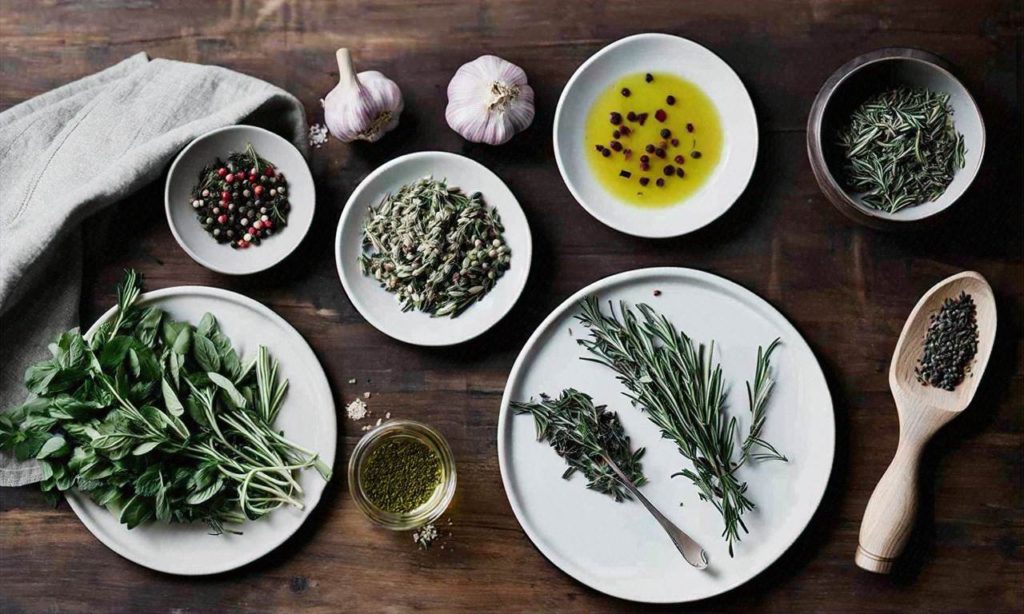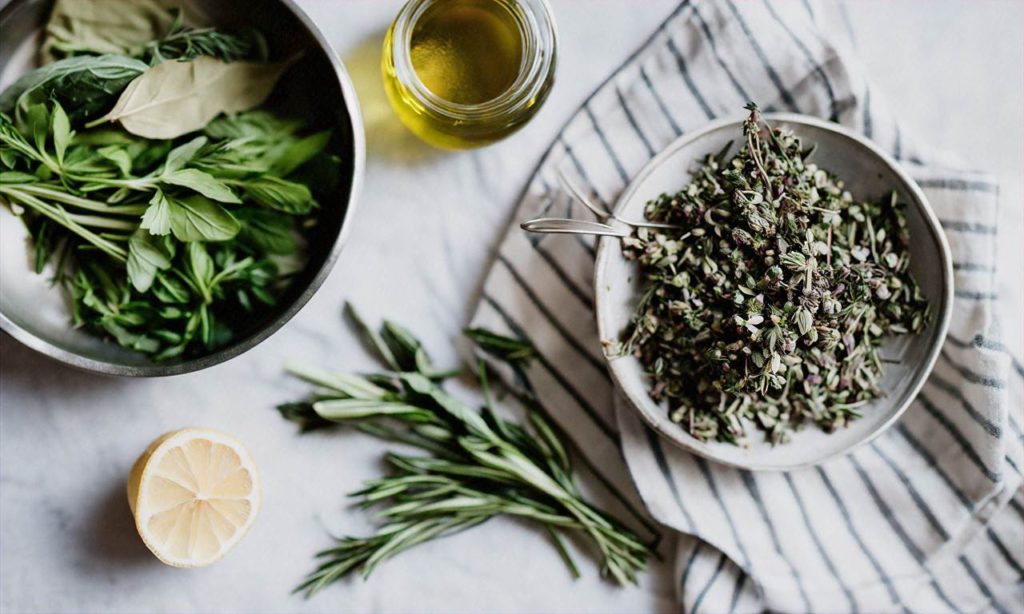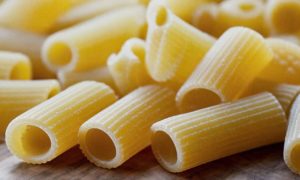Herbs are an essential ingredient in many dishes. Their flavors can elevate simple meals into culinary masterpieces. When cooking with herbs, you have two main options – fresh or dried. Both have their advantages and disadvantages. This ultimate guide will teach you everything you need to know about cooking with fresh and dried herbs.
What’s the Difference Between Fresh and Dried Herbs?
Fresh and dried herbs come from the same plants, but their textures and flavors differ significantly.
Fresh Herbs
Fresh herbs are recently harvested from plants and still contain moisture. Common fresh herbs used in cooking include basil, cilantro, dill, mint, oregano, parsley, rosemary, sage, and thyme.
The main benefits of fresh herbs are:
– More intense, complex flavor – The flavor compounds in fresh herbs are at their peak. They deliver bright, pronounced herbal flavors.
– Soft texture – The leaves and stems have moisture content, so they are supple and soft. This allows them to blend into dishes easily.
– Short shelf life – The downside is that fresh herbs are highly perishable. They only stay fresh in the refrigerator for about a week.
Dried Herbs
Dried herbs are fresh herbs that have been dehydrated to remove moisture. Popular dried herbs used in cooking include basil, oregano, parsley, rosemary, sage, and thyme.
The main attributes of dried herbs include:

– Concentrated flavor – The dehydration process concentrates the flavors and essential oils. Dried herbs have intense flavors.

– Long shelf life – Properly stored dried herbs can last up to a year. There’s no need to worry about spoilage.
– Brittle texture – With no moisture left, dried herbs have a dry, crumbly texture. They don’t fully integrate into dishes.
Now that you know the key differences between fresh and dried herbs, let’s go over when and how to use each.
Cooking with Fresh Herbs
Fresh herbs add a pop of flavor, aroma, and vibrancy to dishes. Their soft texture allows them to blend in seamlessly. Follow these tips when cooking with fresh herbs:
Add Them Towards the End
The flavors and aromas of fresh herbs dissipate with prolonged cooking. For best results, stir them in during the last few minutes of cooking. This helps them retain their flavors.
Use More Generously
Don’t be shy when adding fresh herbs. Use around 3 times more fresh herbs than you would dried since their flavor is less concentrated. Sprinkle them liberally over dishes.
Handle Gently
Treat fresh herbs delicately when prepping and adding them to dishes to avoid bruising. Chop them finely just before adding. Whole leaves can be stirred in for visual appeal.
Store Properly
Always wash and dry fresh herbs thoroughly before storage. Wrap the stems in damp paper towels, place inside a partially closed plastic bag, and refrigerate. This keeps them fresh for up to a week.
With the right techniques, fresh herbs add incredible flavor and vitality to home cooking.
Cooking with Dried Herbs
While dried herbs can seem bland compared fresh, they have some advantages. Follow these guidelines when cooking with dried herbs:
Use Smaller Amounts
A little dried herbs goes a long way since their flavors are highly concentrated from dehydration. Use around 1/3 the amount of dried herbs vs. fresh. Start with 1/4 teaspoon per 4-6 servings.
Add Early On
To allow their flavors to permeate dishes, add dried herbs early in the cooking process. Sprinkle them into soups, sauces, grains, and more during initial cooking stages.
Crush First
To release their essential oils, always crush dried herbs between your fingers before adding them. If a recipe calls for whole dried herbs, crush them halfway.
Store in Airtight Containers
To maximize shelf life, store dried herbs in airtight glass jars or containers away from light and heat. Don’t store near the stove, or they’ll lose flavor.
While they lack the vibrancy of fresh herbs, dried herbs deliver convenience, affordability, and big flavor.
Fresh vs. Dried Herb Conversion
Wondering how much fresh herbs equals dried and vice versa? Generally, you need:
– 1 tablespoon of chopped fresh herbs = 1 teaspoon dried herbs
– 3 sprigs or stems of fresh herbs = 1 teaspoon dried herbs
Here’s a more detailed herb conversion chart:

| Fresh Herb | Dried Herbs |
|---|---|
| 1 tablespoon chopped basil | 1 teaspoon dried basil |
| 1 tablespoon chopped cilantro | 1 teaspoon dried cilantro |
| 1 tablespoon chopped dill | 1 teaspoon dried dill |
| 1 tablespoon chopped mint | 1 teaspoon dried mint |
| 1 tablespoon chopped oregano | 1 teaspoon dried oregano |
| 1 tablespoon chopped parsley | 1 1⁄2 teaspoons dried parsley |
| 1 small sprig rosemary (2-3 inches) | 1⁄2 – 1 teaspoon dried rosemary |
| 1 tablespoon chopped sage | 1 teaspoon dried sage |
| 1 tablespoon chopped tarragon | 1 teaspoon dried tarragon |
| 1 tablespoon chopped thyme | 1 teaspoon dried thyme |
With this handy conversion, you can easily substitute dried herbs for fresh and vice versa. Adjust to taste based on the desired intensity.
Sample Recipes Cooking with Fresh and Dried Herbs
Here are some delicious recipes highlighting fresh and dried herbs:
Pasta with Fresh Basil Pesto
This summery pasta dish combines fresh basil, garlic, Parmesan, pine nuts, olive oil, salt and pepper blended into a vivid green pesto sauce. Toss with hot pasta for a quick, flavorful meal. The fresh basil gives the pesto a delightful herbal vibrancy.
Roast Chicken with Dried Herbs

Coat a whole chicken with olive oil and generously season all over with dried thyme, rosemary, sage and garlic powder before roasting. As the chicken cooks, the dried herbs infuse it with aromatic flavor inside and out.
Fresh Mint Chutney
A tasty Indian condiment, mint chutney combines fresh mint, cilantro, garlic, ginger, lemon juice, yogurt and spices like cumin and chili powder. Blend together and serve as a dip for samosas, pakoras or flatbreads like naan. The fresh mint gives it a cool, refreshing bite.
So try experimenting with fresh and dried herbs in the kitchen today! Adjust recipes to suit your tastes and take your cooking to new flavor heights.




